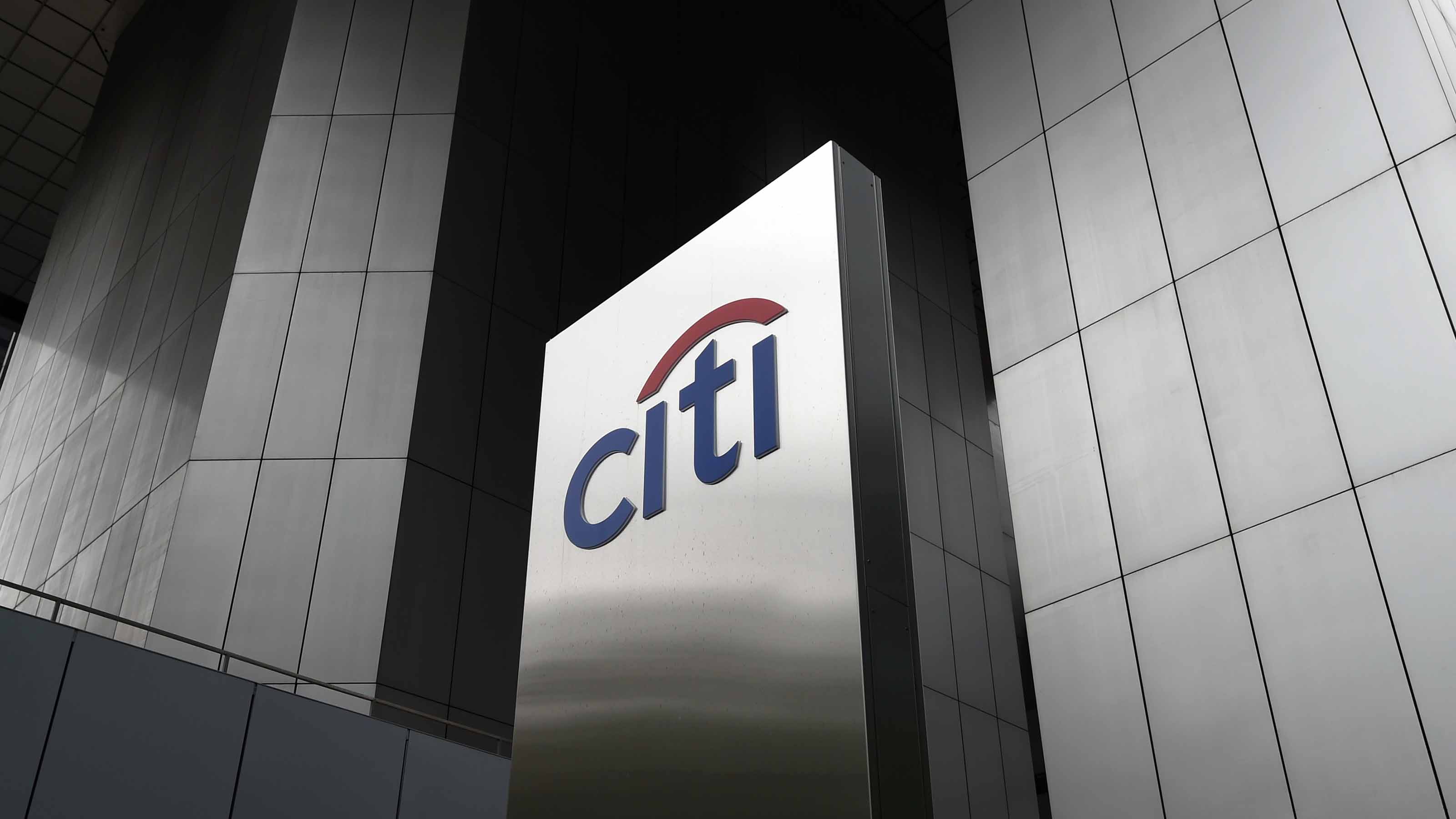Citigroup, Wells Fargo and JPMorgan Climb. Is It Time To Buy Bank Stocks Now?
Bank stocks C, WFC and JPM are all up after earnings, pointing to strength in the beaten-down sector.


If better-than-expected quarterly results from three of the nation's biggest financial firms are any indication, there might be bargains lurking among bank stocks.
JPMorgan Chase (JPM, $112.92), Wells Fargo (WFC, $43.89) and Citigroup (C, $43.55) marked the unofficial opening of the third-quarter earnings season on Friday, and they did so on an upbeat note.
Indeed, all three big banks exceeded Wall Street's earnings per share estimates, and by wide margins at that.

Sign up for Kiplinger’s Free E-Newsletters
Profit and prosper with the best of expert advice on investing, taxes, retirement, personal finance and more - straight to your e-mail.
Profit and prosper with the best of expert advice - straight to your e-mail.
Shares in the three lenders rose sharply on the news, even as the broader market sold off. True, the market pretty much always overreacts – both to the upside and downside – in the immediate aftermath of a news event such as earnings.
But the buoyancy exhibited by JPM, WFC and C after their respective earnings reports might just mean that bank stocks have been beaten down beyond reason heading into what is widely expected to be a brutal third-quarter earnings season.
JPM's Bottom Line Beats the Street
JPM, a component of the Dow Jones Industrial Average and nation's biggest bank by assets, reported a less-than-feared 17% drop in third-quarter profit on Friday, as a jump in interest income cushioned a blow from higher loan loss provisions and a slump in dealmaking due to a worsening economic outlook.
Typically, rising interest rates are good for banks because they can charge consumers more, but the broader risk of an economic slowdown and higher cost of borrowing could cloud the economic outlook and hurt future earnings.
Chief Executive Jamie Dimon said in a statement that American consumers continue to spend and businesses remain healthy.
However, he added there were "significant headwinds immediately in front of us," noting stubbornly high inflation leading to higher global interest rates, the uncertain impacts of quantitative tightening, the war in Ukraine and the fragile state of oil supply and prices.
"While we are hoping for the best, we always remain vigilant and are prepared for bad outcomes."
For the quarter, JPMorgan's profit fell to $9.74 billion, or $3.12 per share. Revenue rose 10% to $32.72 billion, helped by a 22% increase in revenue from fixed income trading.
The bank's adjusted profit was $3.36 per share, well above analysts' average estimate of $2.88, according to Refinitiv data.
Credit Suisse analyst Susan Roth Katzke said "simply put, JPMorgan delivered a solid set of results, from top to bottom."
Citigroup and Wells Fargo Also Join the Beat Parade
Citigroup, the nation's third-largest lender by assets, reported net profit of $3.5 billion, or $1.63 per share, in the three months ended Sept. 30. Analysts on average had expected a profit of $1.42 per share.
True, the bank reported a 25% year-over-year drop in third-quarter profit, hurt by having to set aside more funds to cover soured loans from a potential economic downturn and a slump in investment banking business. However, signs abound that Citigroup's turnaround efforts are beginning to bear fruit.
Meanwhile, analysts were also too pessimistic about Wells Fargo. The nation's fourth-largest bank reported a 31% decline in third-quarter profit, hurt by costs related to a fake accounts scandal and higher loan-loss reserves.
Yet, like its fellow bank stocks, WFC beat estimates. On an adjusted basis, the lender earned $1.30 per share, or far more than the Street's forecast for $1.09 per share.
Of these three bank stocks, only WFC is beating the broader market so far this year. Shares in Wells Fargo were off almost 12% for the year-to-date through Oct. 13. JPM and C were down 31% and 29%, respectively, over that span, while the S&P 500 was off 23%.
Meanwhile, Buy Calls Abound on the Street
Anytime a stock sells off that hard, bulls can usually point to valuation as a reason to be constructive on a name. Happily for bulls, these banks' quarterly reports make such arguments even more convincing.
And not for nothing, but industry analysts were already collectively optimistic about these three bank stocks at their current levels.
JPM carried a consensus recommendation of Buy heading into its third-quarter earnings report, albeit with somewhat mixed conviction. Of the 26 analysts issuing opinions on the stock tracked by S&P Global Market Intelligence, 10 rated it at Strong Buy, six said Buy, nine had it at Hold and one called it a Strong Sell.
Citigroup also scored a consensus Buy recommendation, with seven Strong Buy calls, two Buys, 14 Holds and one Strong Sell.
WFC, meanwhile, sported a consensus recommendation of Buy with high conviction. Of the 26 analysts issuing opinions on the stock tracked by S&P Global Market Intelligence, 12 called it a Strong Buy, nine said Buy and five called it a Hold.
And make no mistake, we're already seeing some analyst upgrades on these bank stocks roll in. CFRA Research upgraded WFC to Hold from Sell on Friday thanks to the bank's third-quarter results.
The Bottom Line
If there was a sliver of a silver lining to be found heading into what is forecast to be the worst earnings season since the height of the COVID-19 pandemic, it was this: Analysts' estimates were so low that companies should be able to trip over them.
If nothing else, results from JPM, C and WFC accomplished exactly that – at least as far as bank stocks are concerned.
Reuters reporters Mehnaz Yasmin, Lananh Nguyen, Niket Nishant and Noor Zainab Hussain contributed to this article.
Get Kiplinger Today newsletter — free
Profit and prosper with the best of Kiplinger's advice on investing, taxes, retirement, personal finance and much more. Delivered daily. Enter your email in the box and click Sign Me Up.

Dan Burrows is Kiplinger's senior investing writer, having joined the august publication full time in 2016.
A long-time financial journalist, Dan is a veteran of MarketWatch, CBS MoneyWatch, SmartMoney, InvestorPlace, DailyFinance and other tier 1 national publications. He has written for The Wall Street Journal, Bloomberg and Consumer Reports and his stories have appeared in the New York Daily News, the San Jose Mercury News and Investor's Business Daily, among many other outlets. As a senior writer at AOL's DailyFinance, Dan reported market news from the floor of the New York Stock Exchange.
Once upon a time – before his days as a financial reporter and assistant financial editor at legendary fashion trade paper Women's Wear Daily – Dan worked for Spy magazine, scribbled away at Time Inc. and contributed to Maxim magazine back when lad mags were a thing. He's also written for Esquire magazine's Dubious Achievements Awards.
In his current role at Kiplinger, Dan writes about markets and macroeconomics.
Dan holds a bachelor's degree from Oberlin College and a master's degree from Columbia University.
Disclosure: Dan does not trade individual stocks or securities. He is eternally long the U.S equity market, primarily through tax-advantaged accounts.
-
 The AI Doctor Coming to Read Your Test Results
The AI Doctor Coming to Read Your Test ResultsThe Kiplinger Letter There’s big opportunity for AI tools that analyze CAT scans, MRIs and other medical images. But there are also big challenges that human clinicians and tech companies will have to overcome.
By John Miley Published
-
 The Best Places for LGBTQ People to Retire Abroad
The Best Places for LGBTQ People to Retire AbroadLGBTQ people can safely retire abroad, but they must know a country’s laws and level of support — going beyond the usual retirement considerations.
By Drew Limsky Published
-
 Stock Market Today: Stocks Surge to Close a Volatile Week
Stock Market Today: Stocks Surge to Close a Volatile WeekIt was another day with a week's worth of both news and price action, but it ended on a strongly positive note.
By David Dittman Published
-
 Stock Market Today: Uncertainty Proliferates: Dow Loses 1,014 Points
Stock Market Today: Uncertainty Proliferates: Dow Loses 1,014 PointsWeaker-than-expected consumer inflation data wasn't enough to stabilize sentiment during another volatile day for financial markets.
By David Dittman Published
-
 Stock Market Today: Dow Rises 854 Points From Its Intraday Low
Stock Market Today: Dow Rises 854 Points From Its Intraday LowIf there's one thing markets hate, it's uncertainty. But uncertainty is all they're getting these days.
By David Dittman Published
-
 Stock Market Today: Markets Celebrate Trump's Tariff Détente
Stock Market Today: Markets Celebrate Trump's Tariff DétenteConsumer discretionary stocks led 10 of the 11 S&P 500 sector groups well into the green.
By David Dittman Published
-
 Stock Market Today: Stocks Struggle After Big Fed Gains
Stock Market Today: Stocks Struggle After Big Fed GainsAn unexpected rise in existing home sales couldn't save stocks on Thursday.
By Karee Venema Published
-
 4 Turnaround Stocks to Consider – and 2 More to Keep an Eye On
4 Turnaround Stocks to Consider – and 2 More to Keep an Eye OnA turnaround stock is a struggling company with a strong makeover plan that can pay off for intrepid investors.
By Nellie S. Huang Published
-
 Best Investments to Sidestep Trump's Trade War
Best Investments to Sidestep Trump's Trade WarThese ETFs are well-designed to weather rising U.S. protectionism and retaliatory tariffs.
By Jeff Reeves Last updated
-
 Stock Market Today: Dow Pops 703 Points on Cooler Inflation
Stock Market Today: Dow Pops 703 Points on Cooler InflationA benign reading from the Consumer Price Index report assuaged market fears about the path of borrowing costs.
By Dan Burrows Published